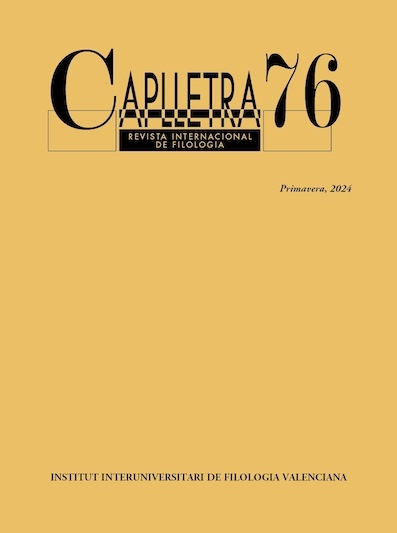The evolution of Pompeu Fabra’s linguistic model (1891-1933)
DOI:
https://doi.org/10.7203/caplletra.76.28208Keywords:
Pompeu Fabra, grammaticography, barcelonocentrism, polymorphism, compositionality Abstract
Abstract
During the opposition period («etapa de contestació») (Murgades 2018), Pompeu Fabra defended a linguistic model based on Eastern Catalan, specifically on barcelonian dialect, which was considered higher for demographic and linguistic reasons (Lamuela & Murgades 1984; Ginebra & Solà 2007). However, during the institutionalization period («etapa d’institucionalització») (Murgades 2018), Fabra evolved into a polymorphic and compositional model in which takes into account other dialects (Lamuela & Murgades 1984; Ginebra & Solà 2007).
This paper analyses the evolution of Pompeu Fabra’s linguistic model since 1891, with the Ensayo, to 1933, with the Gramàtica catalana in its 7th edition. We assume that in the first period Fabra’s linguistic model was mainly barcelonocèntric, but it gradually changed towards a more compositional and polymorphic model in the last period. As a consequence, the evolution is visible not only by abandoning barcelonian linguistic forms, but also by increasing references to other dialects, always supported by the classical language.
 Downloads
Downloads
Downloads
Published
How to Cite
-
Abstract276
-
PDF (Català)274
Issue
Section
License
Authors submitting work to Caplletra for publication must be the legitimate holder of the usage rights. Legitimacy for the purposes of publishing the work must also include images, tables, diagrams and any other materials that may complement the text, whether they are the author of such material or not.
Copyright: on publishing their work in the journal, the author grants Caplletra. Revista Internacional de Filologia usage rights (reproduction, distribution and public communication) for both the paper printed version and for the electronic version.
All work published in Caplletra is covered by the Creative Commons license type Attribution-NonCommercial-NoDerivatives 4.0 (CC BY-NC-ND 4.0).
RESPONSABILITY
Caplletra. Revista Internacional de Filologia does not necessarily identify with the points of view expressed in the papers it publishes.
Caplletra. Revista Internacional de Filologia accepts no responsibility whatsoever for any eventual infringement of intellectual property rights on the part of authors.






